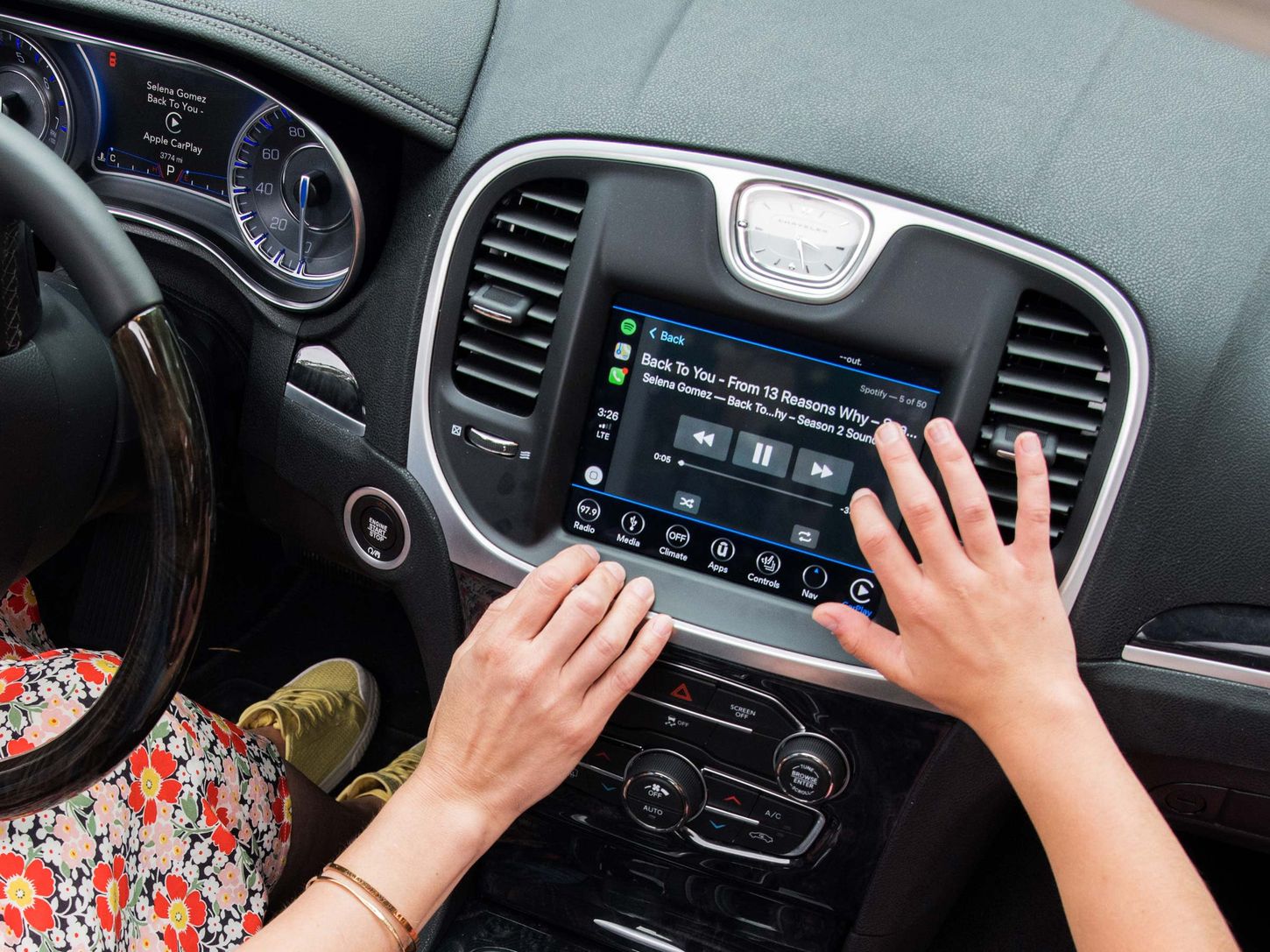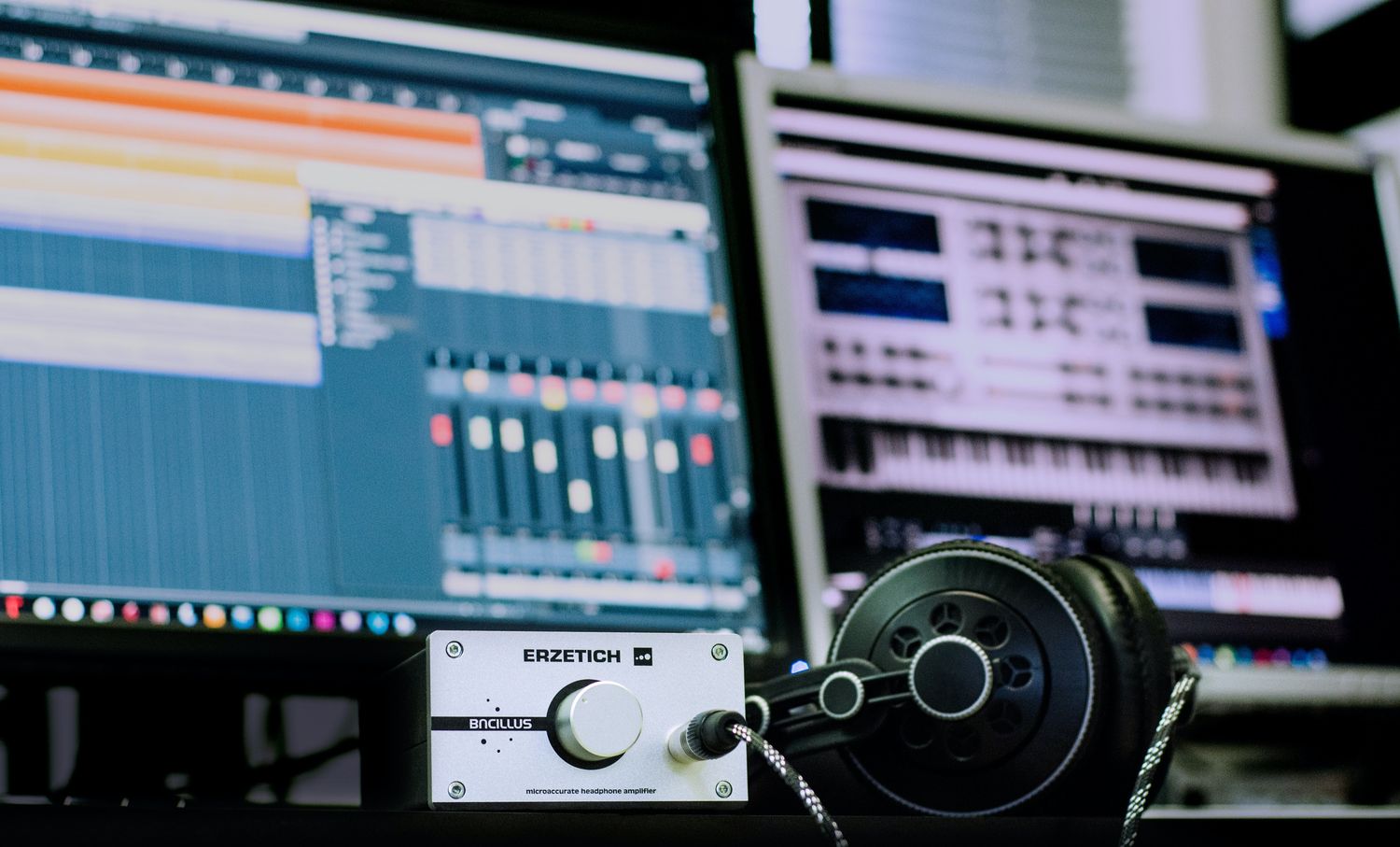Home>Production & Technology>Digital>How To Make Digital Music For Free


Digital
How To Make Digital Music For Free
Published: March 10, 2024
Learn how to create high-quality digital music for free with our comprehensive guide. Discover the best tools and techniques for producing professional-sounding tracks. Start making your own digital music today!
(Many of the links in this article redirect to a specific reviewed product. Your purchase of these products through affiliate links helps to generate commission for AudioLover.com, at no extra cost. Learn more)
Table of Contents
Introduction
Creating digital music is an exciting and rewarding endeavor that allows you to unleash your creativity and share your unique sound with the world. Whether you're a seasoned musician or a newcomer to the art of music production, the digital realm offers a wealth of opportunities to craft and refine your musical compositions. In this comprehensive guide, we will explore the essential steps to make digital music for free, empowering you to embark on your musical journey without breaking the bank.
The digital landscape has revolutionized the music industry, democratizing the creation and distribution of music. With the right tools and knowledge, you can harness the power of digital technology to produce professional-quality tracks from the comfort of your own home. Gone are the days of expensive studio time and cumbersome physical equipment; now, all you need is a computer and a passion for music to dive into the captivating world of digital music production.
Throughout this guide, we will delve into the key aspects of digital music production, from selecting the appropriate software to understanding digital instruments, recording and editing techniques, mixing and mastering your tracks, and ultimately sharing your music online. By the end of this journey, you will have the foundational knowledge and practical skills to bring your musical visions to life in the digital realm.
Whether you aspire to create electronic dance music, experimental soundscapes, or heartfelt acoustic compositions, the digital domain offers a versatile platform for expressing your musical identity. Embrace the boundless possibilities of digital music production, and let your imagination soar as you embark on this enriching and fulfilling creative pursuit.
So, let's embark on this musical odyssey together, as we unravel the intricacies of digital music production and equip you with the tools and insights to unleash your sonic potential. Get ready to immerse yourself in the art of digital music creation, where the only limit is your imagination.
Choosing the Right Software
When venturing into the realm of digital music production, selecting the right software is a pivotal decision that significantly influences the quality and efficiency of your creative process. With a myriad of options available, it's essential to consider your specific musical goals, technical proficiency, and preferred workflow when choosing the ideal software for your endeavors.
Free Digital Audio Workstations (DAWs)
For those seeking cost-effective solutions without compromising on functionality, several free digital audio workstations (DAWs) offer robust features for music production. Audacity, a popular open-source DAW, provides a user-friendly interface and versatile tools for recording, editing, and mixing audio. Its accessibility makes it an excellent choice for beginners and seasoned producers alike.
Another noteworthy option is Cakewalk by BandLab, a professional-grade DAW available for free. Boasting a comprehensive suite of editing and mixing tools, Cakewalk empowers users to sculpt their sonic creations with precision. Its seamless integration with third-party plugins and instruments further expands its capabilities, making it a compelling choice for music production enthusiasts.
Virtual Instruments and Effects
In addition to a capable DAW, incorporating virtual instruments and effects can elevate your musical compositions. Many free plugins and virtual instruments emulate the sound of traditional hardware, offering a diverse palette of sounds to enrich your productions. From synthesizers and drum machines to realistic orchestral instruments, the world of virtual plugins opens up a universe of sonic possibilities without the financial barriers associated with physical gear.
Compatibility and Support
When evaluating software options, consider the compatibility with your operating system and hardware specifications. Furthermore, assess the availability of online resources, tutorials, and user communities that can provide guidance and support as you navigate the intricacies of your chosen software. A vibrant and supportive user community can be invaluable for troubleshooting, learning new techniques, and staying inspired on your musical journey.
Tailoring to Your Workflow
Ultimately, the right software should align with your creative workflow and musical preferences. Whether you favor a streamlined and intuitive interface or require advanced features for intricate sound design, the chosen software should seamlessly integrate with your creative process, empowering you to translate your musical ideas into polished productions.
In the digital realm of music production, the software serves as the foundation upon which your sonic visions materialize. By carefully considering your specific needs and aspirations, you can select the ideal software that propels your creative endeavors forward, enabling you to craft captivating and immersive musical experiences without financial constraints.
Understanding Digital Instruments
In the realm of digital music production, understanding digital instruments is fundamental to crafting captivating and diverse sonic landscapes. Unlike their physical counterparts, digital instruments encompass a wide array of virtual synthesizers, samplers, and emulated acoustic instruments that harness the power of software to generate sounds. These digital instruments offer unparalleled flexibility, enabling musicians and producers to explore an expansive spectrum of tones and textures without the constraints of physical space or budget limitations.
Virtual Synthesizers
Virtual synthesizers, often referred to as soft synths, are versatile tools that emulate the functionality of traditional analog synthesizers while offering an extensive range of sonic possibilities. From classic subtractive synthesis to complex wavetable manipulation, virtual synthesizers empower creators to sculpt rich and dynamic sounds with precision. Whether you seek the warmth of vintage analog tones or the futuristic allure of cutting-edge synthesis techniques, virtual synthesizers provide a boundless playground for sonic exploration.
Sample-Based Instruments
Sample-based instruments leverage recorded audio samples to recreate the sound of real-world instruments, from pianos and guitars to orchestral ensembles and exotic percussion. By manipulating these samples within a digital environment, musicians can infuse their compositions with lifelike timbres and expressive nuances, transcending the limitations of physical instruments. Furthermore, the flexibility of sample-based instruments allows for creative manipulation, such as time-stretching, pitch-shifting, and layering, enabling the creation of entirely new sonic textures.
Drum Machines and Rhythm Modules
In the realm of rhythm and percussion, digital instruments such as drum machines and rhythm modules offer unparalleled versatility and control. These virtual tools enable users to program intricate rhythms, layer percussive elements, and experiment with sound design to craft compelling beats and grooves. Whether you're delving into electronic dance music, hip-hop, or experimental genres, digital drum machines provide a canvas for rhythmic innovation and sonic experimentation.
Emulated Acoustic Instruments
Beyond synthesizers and electronic sounds, digital instruments encompass emulated acoustic instruments that faithfully replicate the timbral characteristics and expressive qualities of their physical counterparts. From realistic piano emulations to orchestral libraries that capture the nuances of string, brass, and woodwind instruments, these digital recreations empower composers and arrangers to compose lifelike and evocative musical arrangements with remarkable authenticity.
In essence, understanding digital instruments is pivotal to unlocking the full potential of digital music production. By harnessing the diverse capabilities of virtual synthesizers, sample-based instruments, drum machines, and emulated acoustic ensembles, creators can transcend the boundaries of traditional instrumentation and embark on a sonic journey that transcends the limitations of the physical world. Embrace the boundless creativity afforded by digital instruments, and let your musical visions flourish in the digital realm.
Recording and Editing Techniques
Recording and editing techniques are pivotal components of the digital music production process, shaping the sonic landscape and refining the expressive qualities of musical compositions. Whether capturing live performances, crafting electronic textures, or manipulating recorded audio, mastering the art of recording and editing empowers creators to sculpt polished and immersive musical experiences.
Capturing Audio
When embarking on the recording phase, it's essential to ensure optimal audio capture to lay a solid foundation for subsequent editing and manipulation. Whether recording vocals, acoustic instruments, or electronic sources, attention to detail is paramount. Factors such as microphone selection, placement, and room acoustics profoundly influence the recorded sound, necessitating meticulous consideration to achieve the desired sonic character.
Multitrack Recording
Multitrack recording, a cornerstone of modern music production, enables the capture of individual audio sources on separate tracks, facilitating precise editing, mixing, and processing. This approach empowers producers to isolate and manipulate specific elements within a composition, allowing for nuanced adjustments and creative exploration during the editing phase.
Editing and Arrangement
In the realm of digital music production, editing encompasses a spectrum of techniques, from precise waveform manipulation to comprehensive arrangement adjustments. Tools within digital audio workstations (DAWs) enable creators to trim, quantize, and manipulate audio with surgical precision, refining performances and sculpting cohesive musical arrangements. Additionally, the arrangement view provides a canvas for structuring musical elements, arranging sections, and crafting dynamic compositions.
Time and Pitch Manipulation
Digital editing tools offer capabilities for time stretching and pitch shifting, allowing for creative experimentation and corrective adjustments. Whether aligning rhythmic elements, altering the tempo of a composition, or harmonizing vocal performances, these features empower producers to transcend traditional constraints and explore innovative sonic possibilities.
Automation and Effects
Automation functions within DAWs enable the dynamic control of parameters such as volume, panning, and effect settings over time, imbuing compositions with movement and expression. Furthermore, the integration of audio effects, such as reverbs, delays, and equalization, empowers creators to shape the sonic character of their recordings, adding depth, texture, and spatial dimension to the mix.
Iterative Refinement
The process of recording and editing is often iterative, with creators refining and honing their compositions through successive revisions. This iterative refinement fosters a creative dialogue between the artist and the music, allowing for continual exploration and evolution of the sonic landscape.
In essence, recording and editing techniques form the bedrock of digital music production, enabling creators to capture, refine, and shape their musical visions with precision and artistry. By mastering these techniques, producers can unleash the full potential of their creativity, crafting immersive and captivating musical experiences that resonate with audiences worldwide.
Mixing and Mastering Your Tracks
Mixing and mastering are the final stages in the digital music production process, where individual elements coalesce into a cohesive and polished sonic tapestry. These critical phases encompass a spectrum of techniques and considerations that elevate raw recordings into professional-quality tracks, ready for distribution and consumption.
Balancing and Polishing
During the mixing phase, producers meticulously balance the levels of individual tracks, sculpting the sonic landscape to ensure clarity, cohesion, and impact. This involves adjusting the volume, panning, and equalization of each element within the mix, allowing instruments and vocals to occupy their respective sonic spaces while complementing one another harmoniously. By fine-tuning the sonic balance, producers create a dynamic and immersive listening experience, where each element contributes to the overall sonic narrative.
Spatial Enhancement and Depth
Spatial enhancement techniques, such as reverb, delay, and spatial processing, imbue the mix with depth, dimension, and a sense of sonic space. These tools allow producers to position elements within a three-dimensional sonic environment, creating a sense of immersion and spatial realism. Additionally, techniques such as stereo imaging and spatial panning further enhance the perceived width and depth of the mix, enveloping listeners in a captivating sonic panorama.
Dynamic Control and Compression
Dynamic control through compression and dynamic processing ensures that the mix maintains a consistent and balanced sonic presence. By taming transients, controlling dynamics, and shaping the envelope of individual tracks, producers achieve a cohesive and polished sonic result. Furthermore, mastering the art of compression empowers creators to imbue their mixes with energy, impact, and a professional sheen, enhancing the overall sonic character.
Mastering for Cohesion and Consistency
The mastering phase focuses on refining the overall sonic character of the mix, ensuring cohesion, consistency, and optimal playback across various audio systems. Mastering engineers employ a suite of tools, including equalization, multiband compression, and limiting, to fine-tune the frequency balance, dynamic range, and overall loudness of the tracks. This meticulous process results in a polished and commercially competitive sound, ready for distribution across digital platforms and physical media.
Iterative Refinement and Critical Listening
Throughout the mixing and mastering stages, creators engage in iterative refinement and critical listening, continuously evaluating and adjusting the sonic elements to achieve the desired artistic vision. This iterative approach fosters a dialogue between the artist and the music, allowing for continual exploration and refinement until the sonic narrative resonates with the intended emotional impact.
In essence, the mixing and mastering stages represent the culmination of the digital music production journey, where raw recordings are transformed into professional-grade tracks that captivate and engage listeners. By mastering the intricacies of balancing, spatial enhancement, dynamic control, and mastering techniques, producers can unleash the full potential of their musical creations, delivering immersive and impactful sonic experiences to audiences worldwide.
Sharing Your Music Online
Once you've meticulously crafted and polished your musical creations, the next crucial step is to share your music with the world through online platforms. The digital landscape offers a myriad of opportunities for artists and producers to connect with global audiences, build a dedicated fan base, and establish a presence in the ever-evolving music industry.
Embracing Digital Distribution Platforms
Digital distribution platforms, such as Spotify, Apple Music, and Amazon Music, serve as gateways to a vast audience of music enthusiasts. By leveraging these platforms, you can make your music accessible to listeners worldwide, transcending geographical boundaries and reaching diverse demographics. Additionally, platforms like Bandcamp and SoundCloud provide independent artists with avenues to showcase their work, connect with fans, and receive direct support through music sales and streaming.
Engaging with Social Media and Online Communities
Social media platforms, including Instagram, Facebook, Twitter, and TikTok, offer powerful tools for engaging with your audience, sharing behind-the-scenes insights, and promoting your music. By cultivating a strong social media presence, you can foster meaningful connections with fans, collaborate with fellow artists, and harness the viral potential of trending content to amplify your music's reach. Furthermore, participating in online communities and forums dedicated to music production and appreciation can expand your network, garner feedback, and forge valuable connections within the music community.
Leveraging Video and Visual Platforms
Incorporating visual elements into your music promotion strategy can significantly enhance the impact of your releases. Platforms such as YouTube and Vimeo enable artists to create visually compelling music videos, lyric videos, and behind-the-scenes content, providing an immersive visual accompaniment to your sonic creations. Additionally, live streaming platforms like Twitch and Instagram Live offer opportunities to connect with fans in real time, showcase your musical prowess, and cultivate a dedicated and engaged audience.
Cultivating a Personalized Website and Email List
Establishing a personalized website serves as a central hub for your music, allowing you to curate your discography, share upcoming releases, and provide in-depth insights into your creative process. Furthermore, building an email list enables direct communication with your fan base, offering exclusive updates, behind-the-scenes content, and early access to new releases. By nurturing a direct connection with your audience, you can cultivate a loyal and supportive community around your music.
Collaborating with Influencers and Curators
Collaborating with influencers, music bloggers, and playlist curators can amplify the visibility of your music, garnering exposure to new audiences and tastemakers within the industry. By forging authentic partnerships and securing placements on influential playlists, you can expand your reach and attract listeners who resonate with your musical style.
In essence, sharing your music online encompasses a multifaceted approach that leverages digital distribution platforms, social media engagement, visual content creation, personalized communication, and strategic collaborations. By embracing these avenues, you can amplify the impact of your music, forge meaningful connections with your audience, and establish a compelling and enduring presence in the digital music landscape.











